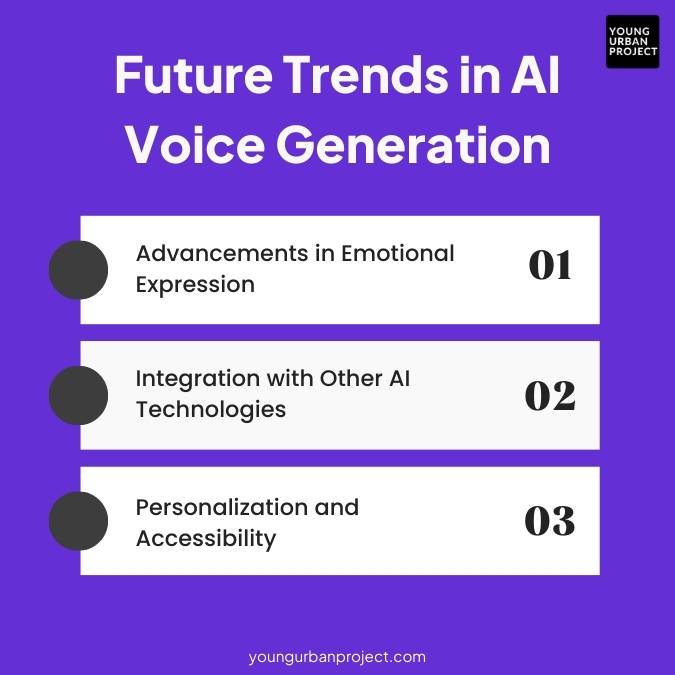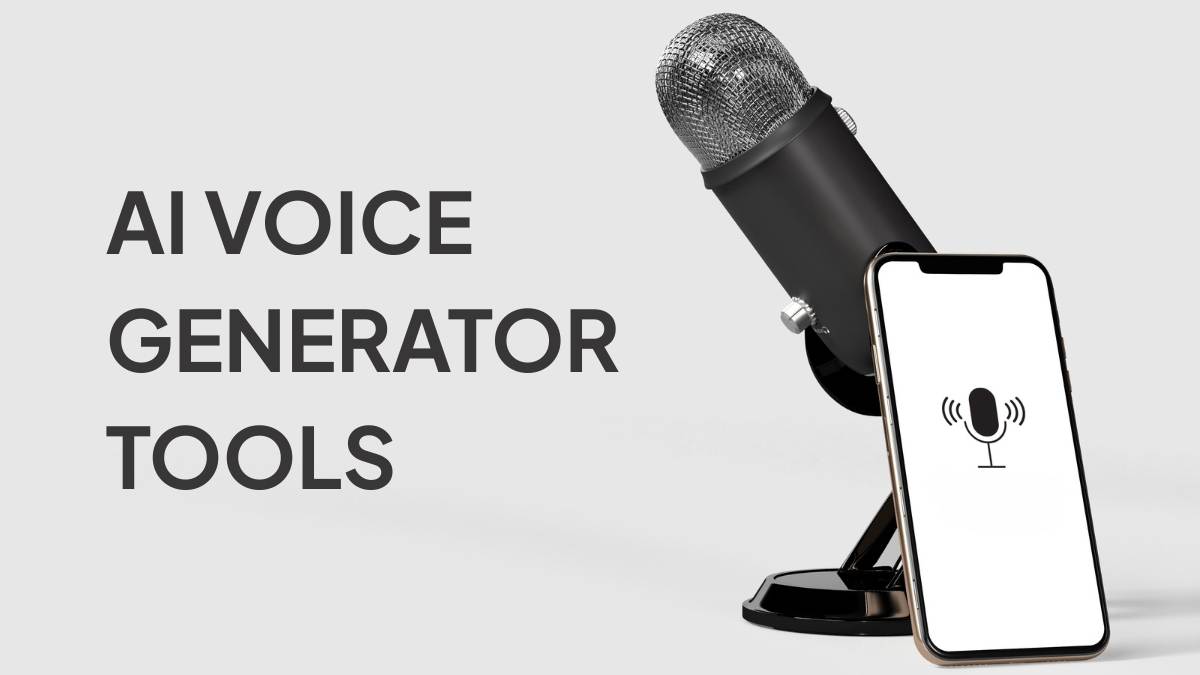Table of Contents
AI Voice Generator Tools
AI voice tools aren’t brand new, but the way they’ve grown lately feels different. A few years ago, if you typed in some text, you’d get back a robotic voice that made you want to turn it off after two minutes. Now? The voices are smoother, easier to listen to, and in many cases hard to tell apart from real people. Businesses are using them for ads, creators for podcasts, schools for online lessons, and so on. But it’s not just about speed or saving money. It’s the fact that almost anyone can sit down, type a script, and suddenly have a professional-sounding voice track without booking a studio or hiring talent. That accessibility changes the game.
Why AI Voice Generation Matters in 2025
The timing feels right. Technology finally sounds natural enough, and the demand for content is higher than ever. Marketing teams, trainers, even small YouTubers are all under pressure to produce more, faster. Hiring a voice actor every single time isn’t always realistic. With these tools, a video or course that might’ve taken weeks now gets done in a day or two. That’s a huge shift. Another layer is accessibility, voices in multiple languages, or content made easier for people who can’t read long texts. It’s not perfect, of course, but the progress is obvious. In 2025, AI voices aren’t just a novelty anymore; they’re a practical tool that saves time and widens reach.
How AI Voice Generators Work
1. Machine Learning Models
The tech starts by soaking up hours and hours of real people talking. Not just the words, but the little quirks, how someone drags a word out or speeds up when they’re excited. The system kind of learns those patterns over time. That’s why the voices now don’t sound so robotic anymore.
2. Natural Language Processing (NLP)
Text is tricky. You know how some words mean different things depending on context? Like read can sound two ways. NLP basically helps the system figure that out. It also tells the voice when to pause or stress a word, so it feels like natural speech instead of a flat read-through.
3. Text-to-Speech (TTS) Synthesis
This is the point where the text actually turns into sound. The old-school ones just blurted words, very monotone. The newer versions are smarter, they’ll slow down, throw in a pause, or even add a bit of feeling. It’s those little details that make you forget you’re listening to a generated voice.
Also Read: 30 Keyword Research Tools for Every Use Case
Voice Cloning and Customization
1. Creating Personalized Voice Models
Cloning lets you make a copy of a specific voice. Could be a teacher, a company rep, or even your own if you want everything in your voice without recording all the time. Once that model’s ready, you can use it across projects. It keeps things sounding consistent, which is a big deal for brands.
2. Adjusting Tone, Pitch, and Accent
Sometimes you don’t want the same sound. A training video might need something calm and steady, while a social media clip needs to be upbeat. Most tools let you tweak pitch, speed, or accent until it feels right. That flexibility means the same script can play totally different depending on the setting.
Also Read: Best AI SEO Tools to Boost Rankings
Top 16 AI Voice Generator Tools in 2025
1. VEED AI Voice Generator
Known for easy-to-use features that generate high-quality voiceovers with natural-sounding speech. Popular with content creators and businesses that need quick voiceover solutions.
Features: Text-to-speech, multiple voice styles, customizable speed and pitch
Best For: YouTube videos, podcasts, commercials
Pricing: Free version – 10 minutes of voice generation/month. Paid plans start at $12/month (higher tiers for longer durations and more voices)
With the introduction of VEO 3.1, VEED’s AI voice generator now offers enhanced voice modulation and smoother transitions for even more natural-sounding speech.
2. ElevenLabs
Known for ultra-realistic voices that actually carry emotion. Popular with creators who need professional-quality narration.
- Features: Voice cloning, emotional range, multilingual support
- Best For: Audiobooks, dubbing, storytelling
- Pricing: Free version – 10k credits/month. From $5/month (higher tiers for heavy use)
3. Murf AI
Murf has become a favorite in e-learning and business content. Easy-to-use editor, solid voice options.
- Features: 20+ languages, voice editing, sync with slides/videos
- Best For: Courses, training modules, marketing videos
- Pricing: Free plan available – 10 Projects, 10 minutes of Voice Generation, 1 Editor. Starter plan starts at $19/month.
4. Respeecher
Big in film and gaming because of its realistic voice cloning. Can almost replicate anyone’s voice if trained.
- Features: High-quality voice cloning, studio-level production
- Best For: Movies, games, ads, dubbing
- Pricing: Custom (geared towards studios)
5. WellSaid Labs
Focused on professional business voices. High polish, very natural, but more on the expensive side.
- Features: Studio-grade voices, customization, team-friendly tools
- Best For: Corporate training, internal communication, narration
- Pricing: Free trial available. Plans start at $50/month.
6. Speechify
Started as a text-to-speech reader, now widely used for personal and professional tasks. Works across devices.
- Features: Reads text on web, docs, PDFs, and mobile app integration
- Best For: Students, professionals, productivity
- Pricing: Free plan available (limited features), paid plan at $11.58/month billed annually.
7. Play.ht
Popular with podcasters and bloggers. Large voice library, good balance between cost and quality.
- Features: 60+ languages, voice cloning, audio exports
- Best For: Articles-to-audio, podcasts, blogs
- Pricing: Unavailable
8. Fiverr Go AI Audio Generator
Fiverr’s own AI audio tool makes it easy for creators who already use Fiverr for projects. It’s simple and pay-as-you-go.
- Features: Basic voice generation, quick turnaround, integrated in Fiverr
- Best For: Freelancers, small projects, testing ideas
- Pricing: Pay-per-use (no monthly plan)

Apply now: Ai Marketing Course
9. Listnr
Listnr focuses on creators who want to publish fast. It’s built for podcasts, videos, and online content.
- Features: 20+ languages, podcast hosting, embed player
- Best For: Content creators, podcasters, YouTubers
- Pricing: From $19/month
10. Fliki
Fliki mixes voice generation with video. You can turn blog posts or scripts into short videos with a voiceover.
- Features: 75+ languages, stock images/video integration, text-to-video
- Best For: Social media clips, explainer videos, bloggers
- Pricing: Free plan available for beginners trying out AI video creation. Standard plan starts at $21/month (billed annually).
11. TTSMaker
A straightforward, free option. No bells and whistles, but it works for basic needs.
- Features: Text-to-speech in multiple languages, simple interface
- Best For: Students, casual users, quick conversions
- Pricing: Free
12. Hume
Hume is different because it works on emotional expression in voices. It’s still aimed more at advanced users and enterprises.
- Features: Emotion-rich voices, 30+ languages, high customization
- Best For: Storytelling, games, interactive projects
- Pricing: Custom pricing
13. Altered
Altered is built for creators who want full flexibility. Known for strong voice editing and transformation.
- Features: Voice cloning, pitch and tone control, wide language support
- Best For: Media production, ads, creative projects
- Pricing: Custom pricing
14. DupDub
DupDub is gaining attention for its affordable plans and easy customization. Good mix of voices and editing options.
- Features: 30+ languages, voice cloning, editing tools
- Best For: YouTubers, small businesses, content creators
- Pricing: Free plan available. Paid plan starts from $11/month, billed annually.
15. Synthesia
Synthesia is best known for AI video avatars, but its voice generation is a key part of it. Strong multilingual support.
- Features: 120+ languages, video + voice integration, avatars
- Best For: Training videos, marketing, explainer content
- Pricing: Free plan available. Paid plan starts from $18/month
16. Descript
Descript combines voice generation with editing and transcription. Very popular with podcasters and video creators.
- Features: Overdub (voice cloning), audio/video editing, collaboration tools
- Best For: Podcasts, video creators, teams
- Pricing: From $16/month
💡 Note on Pricing: We’ve carefully checked and listed the pricing details for each tool at the time of writing. That said, these platforms often update their plans and costs. For the most accurate and latest information, it’s always best to visit the official websites directly before making a decision.
Also Read: Content Marketing Tools
How to Choose the Right AI Voice Generator Tool
1. Assessing Your Needs
Think about why you need it first. A podcaster may want natural flow, while a business might care more about multilingual support. Define the goal before diving in.
2. Evaluating Tool Features
Pay attention to things like voice quality, customization, and how easily it plugs into your workflow. Sometimes a “simpler” tool does the job better.
3. Considering Budget and Pricing Plans
Free tools work for small tasks, but if you’re scaling, paid plans usually offer better voices and stability. Match your budget with how often you’ll really use it.
Also read: Best AI Voiceover Tools
Ethical Considerations in AI Voice Generation
1. Voice Cloning and Consent
Cloning a voice without permission raises serious issues. Always make sure the person knows and agrees before their voice is used digitally.
2. Deepfake Concerns
The same tech that makes marketing easier can also be abused. Fake voices can spread misinformation fast, so platforms are working on checks and safeguards.
3. Regulatory Landscape
Rules are still developing. Some regions are starting to draft guidelines on voice cloning and AI audio. It’s worth keeping an eye on laws before using a tool commercially.
Also Read: 52 Best Affiliate Marketing Tools
Future Trends in AI Voice Generation

1. Advancements in Emotional Expression
Voices are getting better at sounding alive, showing excitement, sadness, or calmness. Tools like Hume are already experimenting with this. It makes storytelling and gaming far more immersive.
2. Integration with Other AI Technologies
Expect voice generators to blend with AI agents and assistants. Imagine chatbots or virtual teachers that not only talk but also feel more human.
3. Personalization and Accessibility
Personalized voices will grow. A learner could pick a voice that feels friendly, while someone with reading challenges might choose slower pacing. This flexibility makes digital content easier for everyone to consume.
Also Read: Best WhatsApp Marketing Software Tools
Conclusion
The whole space of AI voice generators has moved faster than most people expected. Not too long ago, you could always tell when a voice was computer-made; it had that stiff, robotic ring. Now it’s honestly tricky to spot the difference. That shift has opened doors for podcasters, teachers, small businesses, and even solo creators who don’t have the budget for professional studios. The key, really, is figuring out what you need. Some tools are great for long narrations, others for quick clips or training material. But alongside the excitement, there’s also the responsibility part, especially with voice cloning and deepfakes. The tech isn’t slowing down, so the best approach is to keep testing, stay aware, and use it wisely.
FAQs: AI Voice Generator Tools
What is an AI voice generator?
It’s software that turns written text into speech using advanced algorithms, giving you natural-sounding voiceovers.
Can AI voice generators clone voices?
Yes, many of them offer voice cloning. It lets you replicate specific voices for consistent or personalized use.
Are there free AI voice generator tools available?
Some tools, like TTSMaker, are free, though usually with limited features. Paid ones give higher quality and more control.
How accurate are AI-generated voices?
Modern tools are highly accurate, often hard to distinguish from human recordings. Still, some complex emotions are tricky.
What are the ethical concerns with AI voice generation?
The biggest concerns are cloning voices without consent and misuse for deepfakes or spreading misinformation. Regulations are slowly catching up.

